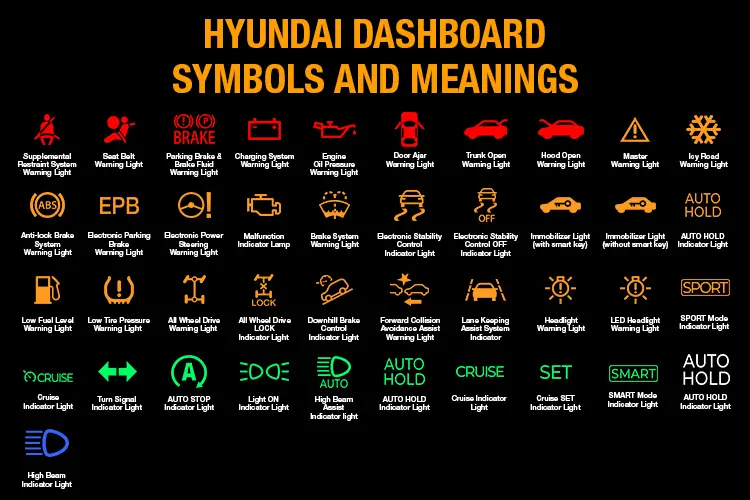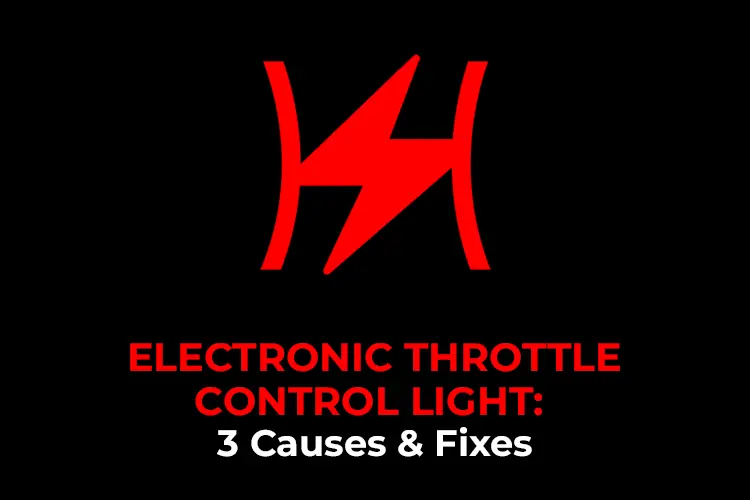Notice a check engine light appearing on your Hyundai dashboard, and don’t know how to respond?
Don’t worry! In this article, I will provide insights into the meaning of the check engine light, common causes, and steps for diagnosis and resolution.
Let’s dive into it!
What Does the Hyundai Check Engine Light Mean?
In every Hyundai model, whether it’s a Sonata, Elantra, Accent, Santa Fe, or Tucson, the check engine light is designed to warn of a malfunction in your emission control system.
It’s important to address this light promptly, as it can indicate a wide range of potential problems. Here’s what you need to know:
A solid check engine light typically shows less severe issues, such as a loose or damaged gas cap. While you may not need to pull over immediately, it’s important to have the issue diagnosed and repaired as soon as possible to prevent further damage.
A flashing check engine light indicates more severe problems, like a misfiring engine that could lead to catalytic converter damage. When the light is flashing, reduce your speed, avoid heavy acceleration, and have your vehicle inspected by a professional immediately.
Is It OK to Drive With the Check Engine Light On Hyundai?
Depending on the specific situation, you might be able to drive for a short distance with a solid light. But if you notice the check engine light flashing and your car shaking, it warns of a more urgent situation that requires immediate attention. Have your vehicle towed and inspected by a professional. Ignoring the check engine light could lead to increased emissions, reduced fuel efficiency, or potential damage to the engine.
What Are the Common Causes of the Hyundai Check Engine Light?
- Loose or damaged gas cap
- Faulty oxygen sensors
- Problems with the Mass Airflow Sensor (MAF)
- Malfunctioning ignition coils
- Misfiring cylinders
- Issues with the catalytic converter
Learn More: What the Check Engine Light is Telling You and How to Respond: I explained details about the causes of check engine light in the article.
What to Do When the Hyundai Check Engine Light Comes On
Step 1: Check your gas cap
Make sure the gas cap is properly tightened. If you notice any signs of damage, replace the cap.
In case the check engine light persists after a few driving cycles, it indicates a more intricate problem. Proceed to the next step.
Step 2: Read Hyundai check engine light codes
You need a diagnostic tool to read the trouble codes associated with the check engine light:
- Switch off the engine.
- Connect the scanner to the OBD2 port.
- Restart the ignition and follow the provided scanner instructions.
- Choose the “Read Codes” function on the scanner.
After getting the codes, use the OBD2 Code Lookup to gather information about the exact issue causing the light to illuminate and find guidance on how to address it. Alternatively, you can download the Hyundai Codes List for reference.
Step 3: Repair or replace the malfunctioning parts
Based on the information gathered from the trouble codes, proceed to repair or replace the malfunctioning parts. If you’re uncertain or the issue seems complex, it’s recommended to consult a qualified mechanic or a Hyundai dealership for expert assistance.
How to Reset the Check Engine Light On Hyundai
Once the underlying issue has been addressed, the check engine light may not turn off immediately. In some cases, the light may reset on its own after a certain number of driving cycles.
Alternatively, you can use the scanner to reset the light. The procedure is straightforward:
- Connect the OBD-II scanner to the vehicle’s diagnostic port.
- Select the “Clear Code” function on the scanner.
- Confirm the action, and the check engine light will be reset.
What’s Next?
Responding to your Hyundai’s Check Engine Light is vital for maintaining your vehicle’s health.
If you have any questions or additional tips to share, feel free to leave a comment below.




Recommended for you
Drivetrain Malfunction BMW: 6 Causes and How to Fix It
Troubleshooting the “Engine Malfunction Reduced Power” Message on Your BMW or MINI Cooper
Understanding the BMW Coolant Light: What You Need to Know